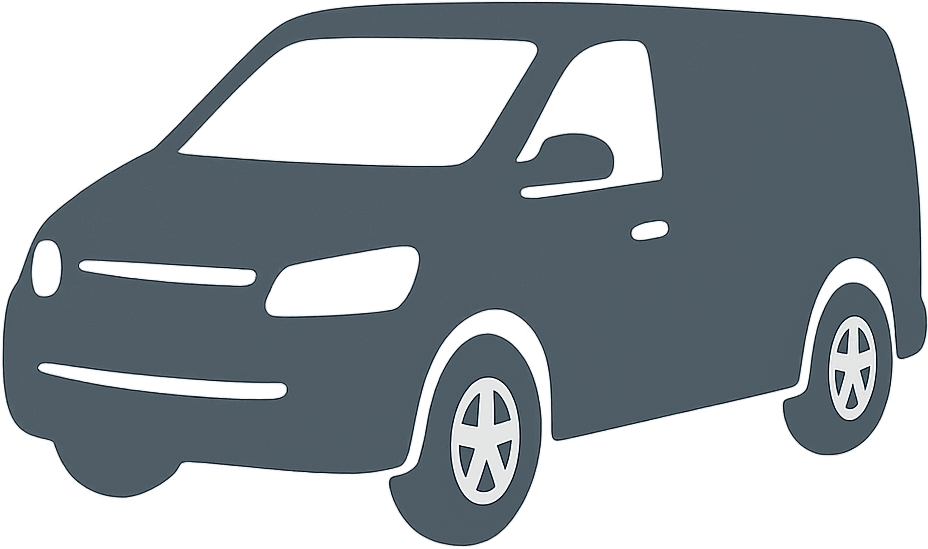 1996 Perodua Rusa Dimensions, Size & Specs
1996 Perodua Rusa Dimensions, Size & Specs
The Perodua Rusa, introduced in 1996, is a compact van designed to offer both utility and practicality, making it suitable for various urban and suburban needs. As a versatile vehicle, the Rusa was designed with a compact footprint to facilitate easier maneuvering in tight spaces, common in Asian cities, while still providing sufficient interior space for passengers and cargo. Although specific dimensions such as length, width, height, and weight for this model are less widely published, the Perodua Rusa typically exhibits the classic van characteristics of a boxy shape to maximize interior volume.
The 1996 Perodua Rusa balances functional design with affordability, targeting small business owners, families, and commercial users who require a reliable transport solution. Its van configuration supports flexible seating arrangements and cargo storage, making it a practical choice in the segment. Combining a modest size with efficient engine performance, the Rusa aims to deliver a cost-effective and manageable vehicle for everyday use.
In the wider context of car size comparison, the Perodua Rusa stands out for its compact dimensions, which are advantageous in urban environments with limited parking and narrow roads. While exact measurements in metric and imperial units are scarce, similar vans from the era typically measure around 4 to 4.3 meters (approximately 13 to 14 feet) in length and about 1.6 to 1.7 meters (5.25 to 5.6 feet) in width. Its height generally ranges near 1.8 meters (around 5.9 feet), providing ample headroom and cargo capacity.
This generation of the Perodua Rusa reflects the brand's commitment to producing practical and economical vehicles. Its design favors maximized space within a minimized footprint, an important factor when comparing vans and compact vehicles from the mid-1990s. Overall, the Perodua Rusa remains a noteworthy example in the van category for those researching car sizes and usage in the Asian automotive market of the late 20th century.
Discover the standout features that make the 1996 Perodua Rusa a leader in its class
Have a question? Please check our knowledgebase first.
The Perodua Rusa 1996 has a compact van size with an overall length of approximately 3,615 mm (142.3 inches), a width of 1,500 mm (59.1 inches), and a height of 1,845 mm (72.6 inches). These dimensions make it a practical vehicle for urban driving and maneuverability, while still offering sufficient interior space for passengers and cargo, typical for a van in this segment.
The Perodua Rusa 1996 features a wheelbase of approximately 2,200 mm (86.6 inches). This relatively short wheelbase contributes to the van's nimble handling and ease of maneuvering in tight spaces, making it well-suited for city driving. However, a shorter wheelbase can also mean a slightly firmer ride compared to larger vans, as it may transmit more road imperfections into the cabin. Overall, the Rusa balances comfort with practical urban usability.
The 1996 Perodua Rusa weighs approximately 930 kilograms (2,050 pounds) in its standard configuration. This relatively light weight allows for better fuel efficiency, which is beneficial for a van designed primarily for urban and family use. The lighter curb weight also aids in easier handling and acceleration with the engine options offered at the time, ensuring the vehicle remains economical and practical under typical driving conditions.
The Perodua Rusa 1996 offers a versatile interior layout characteristic of compact vans, with seating arrangements that can be adjusted or folded to maximize cargo space. While exact volume figures vary depending on seat configurations, the van provides ample space for small-to-medium-sized loads, making it suitable for families or small business needs. Its boxy shape efficiently utilizes cabin space, providing functional storage without compromising passenger comfort.
Yes, with its compact dimensions (length 3,615 mm / 142.3 in, width 1,500 mm / 59.1 in, height 1,845 mm / 72.6 in), the Perodua Rusa will fit comfortably into a standard residential garage, which typically accommodates vehicles up to around 5,000 mm (196.8 inches) long and 2,500 mm (98.4 inches) wide. Its stature makes parking and storage convenient for urban households with limited garage space.
The Perodua Rusa was introduced as Perodua's first van model in 1996, effectively making it a new vehicle rather than a direct successor to an earlier model. Based on the Daihatsu Zebra, the Rusa carried forward similar compact van dimensions, but Perodua tailored it to local market preferences with slight adjustments. Compared with typical predecessor vans in the region, it is more compact and lightweight, prioritizing fuel efficiency and urban practicality rather than heavy cargo capacity.
The 1996 Perodua Rusa is relatively smaller and lighter than many other compact vans from the mid-1990s, such as the Suzuki Carry or the Daihatsu Hijet. Its overall length of 3,615 mm (142.3 in) and width of 1,500 mm (59.1 in) position it as a highly maneuverable vehicle ideal for tight urban environments. While other vans might offer more cargo volume or passenger space at the expense of larger size and less fuel economy, the Rusa focuses on compactness, making it competitive but distinct in its class.
The Perodua Rusa 1996 typically seats up to seven passengers, including the driver, depending on the seating arrangement. The van’s interior is configured with two rows of seats behind the driver, providing flexibility for families or small groups. Its boxy design helps maximize interior headroom and legroom, making it comfortable for passengers while maintaining spaciousness in a compact footprint.
The 1996 Perodua Rusa was typically equipped with a small displacement, fuel-efficient engine consistent with its role as a city van. Commonly, it featured a 1.3-liter gasoline engine providing adequate power for urban driving and light cargo transport. Its modest output supports good fuel economy and lower emissions, aligning with the vehicle’s focus on practicality and affordability rather than high performance or speed.
The Perodua Rusa 1996 is well suited for both families and small businesses due to its practical size, flexible seating arrangement, and fuel efficiency. Its compact dimensions make it easy to drive and park in urban areas, while the seating permits carrying several passengers or a reasonable amount of cargo. Economical operation costs and maintenance further enhance its practicality for everyday use, especially in dense city environments where maneuverability and efficiency are key priorities.
